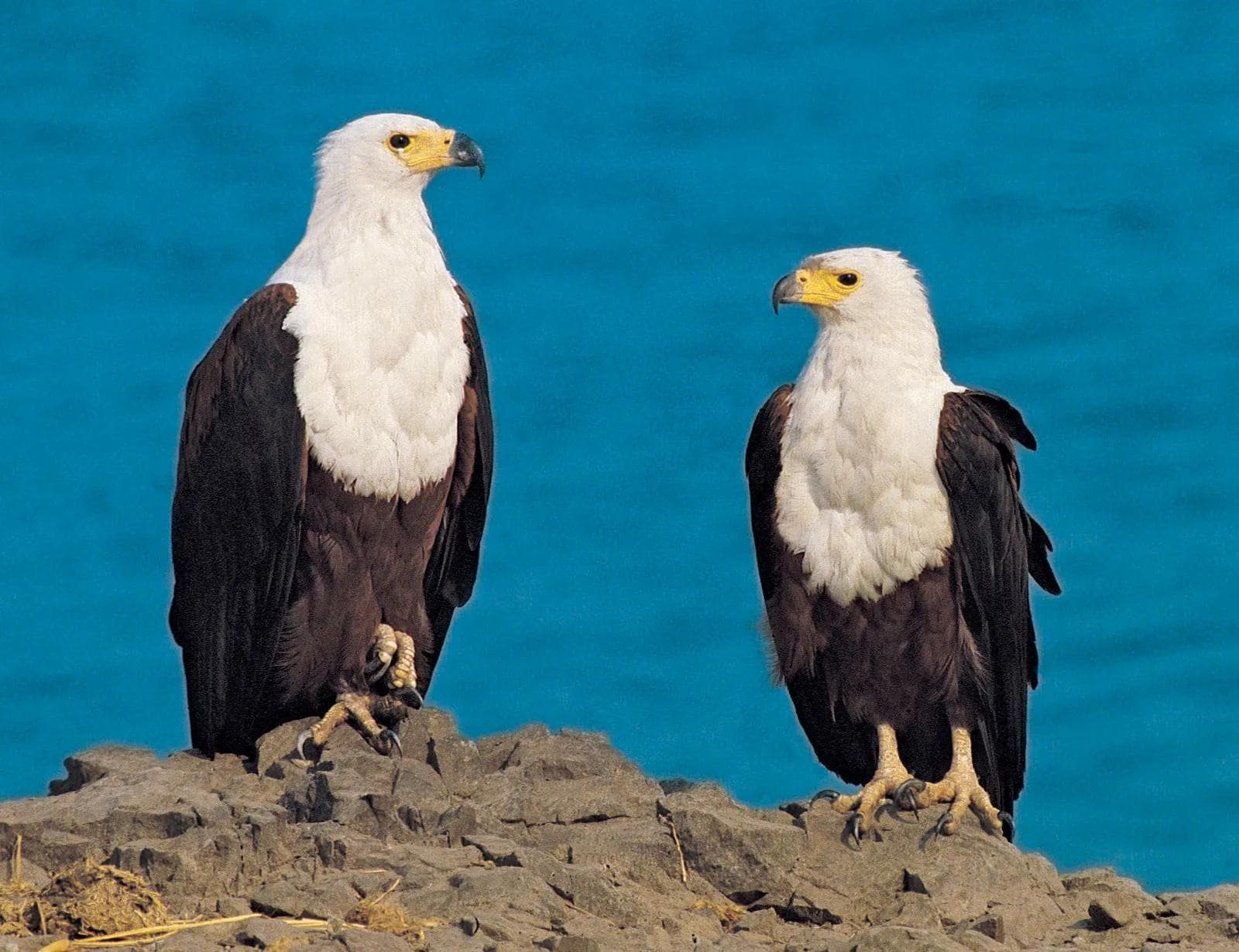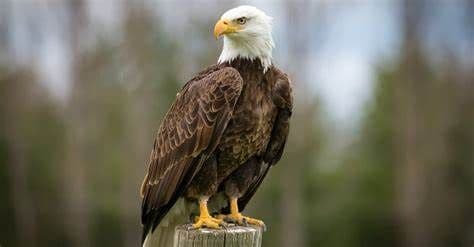Eagle

Physical Description and Appearance
Size: Their size varies considerably, ranging from the smallest South Nicobar serpent eagle of length 16 in (40 cm) to the largest Harpy eagle and Philippine eagle measuring between 3 ft 2.5 in – 3 ft 3 in (98-100 cm).
Weight: Different eagle species have different weights. The South Nicobar serpent eagle, for example, weighs only 0.99 lb (450 g) while the Steller’s sea eagle is the heaviest, weighing 15 lb (6.7 kg).
Wingspan: These birds are noted for having the largest wingspans among avian predators, with the white-tailed eagle and Steller’s sea eagle having median wingspans of 7 ft 2 in (218.5 cm) and 7 ft (212.5 cm) respectively.

Color: Eagles typically have dark-colored, brown, or blackish feathers.
Eyes: The size of their eyes is similar to that of humans, and their eyesight is roughly 4-8 times stronger as compared to the average human.
Beak: Like all predatory birds, eagles have large, hooked beaks for tearing flesh and killing their prey.
Distribution
The places where most of the 60 eagle species are found include Europe, Africa, and Asia. Only 14 species live outside these areas, three in Australia, nine in South and Central America, and two in North America.
What kind of Habitats are they found in
Most eagle species prefer building their nests on high cliffs and in tall trees near water bodies like streams, lakes, and rivers. Since eagles are sensitive to disturbances caused by human activity, they require extensive, undisturbed forested lands for nesting.

How long do they live
In the wild, eagles may live for about 14-30 years, but in captivity, they have lifespans at over 40 years. The oldest in the wild was a banded Bald eagle that died at 38 years of age in 2015 after being hit by a car.
What do they eat
Eagles are apex avian predators and prey on a variety of birds, fish, small mammals, amphibians, reptiles, and crabs. When food is scarce, these carnivores take advantage of decaying or dead flesh. Bald eagles like eating fish while golden eagles primarily eat marmots, ground squirrels, rabbits, bighorn sheep, and young pronghorn antelope.
Behavior
- Eagles have large wings, and they enjoy flying at high altitudes.
- These predatory birds are excellent hunters, and they put up a fierce fight to regain their territory or win their prey no matter what its size or strength.
- Eagles use strong winds and upward air currents coming off mountains and hills to gain altitude and fly large distances, especially when migrating to another location. It keeps them from flapping their wings, which saves a significant amount of energy.
- When they get weak and old, eagles stay hidden in rocks and pluck their worn-out feathers. They wait in their hiding place until new feathers grow.
How do they Reproduce and Mate
The breeding process starts with building a nest in which both the male and female take part. Nesting begins one to three months before the mating season. If they have successfully produced and protected their young at the nest, they will use that same nest every year.
They engage in a courtship display that involves swooping flight, circling, and cartwheeling in the air, followed by copulation. Mating occurs in the nest or on a branch with the male eagle mounting the female. The process by which both the male and female cloaca touch and the sperm is transferred is called the cloacal kiss.
Eagles are monogamous, meaning a pair remains together for life. The female usually lays a clutch of 1-3 eggs about 5-10 days after copulation. Both the male and female eagles incubate their eggs for about 35-45 days, after which the eggs hatch in the order laid.
Written by:Mike Andreas
November 29, 2024